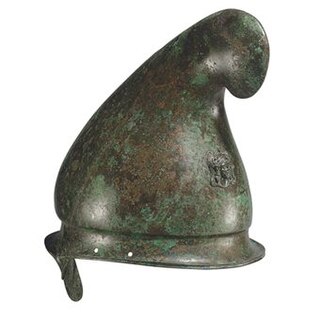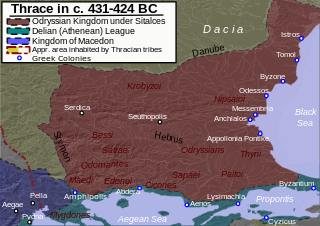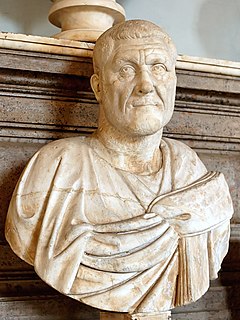 W
WAedava was a Dacian settlement located south of the Danube in Moesia. In his De Aedificiis, the 6th century AD historian Procopius placed Aedava on the Danubian road between Augustae and Variana. He also mentioned that Emperor Justinian restored the damaged portion of the town defenses.
 W
WThe Anastasian Wall or the Long Walls of Thrace is an ancient stone and turf fortification located 64 km (40 mi) west of Istanbul, Turkey, built by the Eastern Roman Empire during the late 5th century.
 W
WThe gold wreaths from Thrace are jewellery wreaths found in inner Thrace, which is within present day Bulgaria. The gold wreaths were found in the mounds and tombs of aristocrats at various locations in Thrace that have been dated to a period from the latter half of the fourth century and early part third century BC.
 W
WThe Golden Orphism Book is a Thracian golden artifact consisting of 6-bound sheets with total weight of 100 grams, with a size 5 to 4.5 cm, made of 23.82-karat gold. Its contents are related to the Orphism, which existed in the Thracian and Hellenistic world. Illustrations of priests, horse-rider, a mermaid, a harp and soldiers, as well as writing in Etruscan, hint at burial process of an aristocrat, devoted to the cult of Orphism. The book can be seen by the public in the National Historical Museum in Sofia
 W
WThe Phrygian helmet, also known as the Thracian helmet, was a type of helmet that originated in Classical Greece and was widely used in Thrace, Dacia, Magna Graecia and the Hellenistic world until well into the Roman Empire.
 W
WThe Odrysian Kingdom was a state union of over 40 Thracian tribes and 22 kingdoms that existed between the 5th century BC and the 1st century AD. It consisted mainly of present-day Bulgaria, spreading to parts of Southeastern Romania, parts of Northern Greece and parts of modern-day European Turkey.
 W
WThe Panagyurishte Treasure is a Thracian treasure.
 W
WThe members of the Delian League/Athenian Empire can be categorized into two groups: the allied states (symmachoi) reported in the stone tablets of the Athenian tribute lists, who contributed the symmachikos phoros in money, and further allies, reported either in epigraphy or historiography, whose contribution consisted of ships, wood, grain, and military assistance; proper and occasional members, subject members and genuine allies.
 W
WSapaeans, Sapaei or Sapaioi were a Thracian tribe close to the Greek city of Abdera. One of their kings was named Abrupolis and had allied himself with the Romans. They ruled Thrace after the Odrysians until its incorporation by the Roman Empire as a province.
 W
WThis article lists rulers of Thrace and Dacia, and includes Thracian, Paeonian, Celtic, Dacian, Scythian, Persian or Ancient Greek up to the point of its fall to the Roman empire, with a few figures from Greek mythology.
 W
WThraco-Cimmerian is a historiographical and archaeological term, composed of the names of the Thracians and the Cimmerians. It refers to 8th to 7th century BC cultures that are linked in Eastern Central Europe and in the area west of the Black Sea.
 W
WMaximinus Thrax or Maximinus I was Roman emperor from 235 to 238.